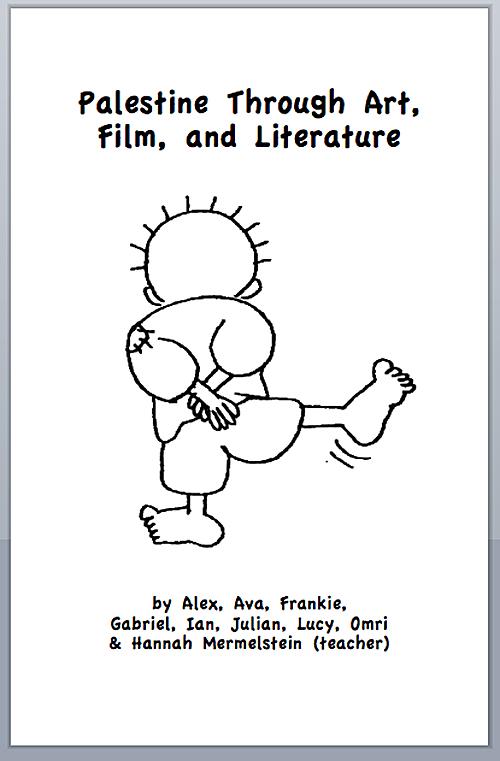Palestine Through Art, Film and Literature
Introduction
This zine was put together by eight high school students grades 9-12 and one teacher/librarian at Saint Ann’s School in Brooklyn, NY. The students took a Fall 2012 seminar class called Palestine Through Art, Film, and Literature. As their culminating project, each student interviewed a Palestinian artist (or a non-Palestinian artist who does work about Palestine), gave a class presentation, and created a zine page (or multiple pages). We added pages about many of the other works we studied in class, and voila, here it is!
According to Wikipedia, a zine is a “small circulation self-published work of original and/or appropriated texts and images usually reproduced via photocopier.”
Palestine Through Art, Film & Literature course description:
“i am a poet and poor at war / can defend myself but would rather eat watermelon and watch the sky”
(Suheir Hammad, Palestinian American poet)
In this class we will examine a rich array of Palestinian cultural works and discuss the ways in which art and politics continually influence each other. We will delve into literature, film, visual art, music, dance, poetry, and more. We will explore works coming from inside and outside Palestine, and those created by Palestinians and (in a few cases) non-Palestinians. We will invite guest speakers to share their own work, thoughts, and influences with us. We will create a class zine – our own cultural work – to share some of what we’ve learned. Oh, and we’ll eat great food!
_______________________
Teacher's Statement
Teaching Palestine through cultural works is a way to expose high school students to art, film, literature, music, and poetry that they are otherwise unfamiliar with, created by people whose voices these students have never heard. We don't have to argue about Israel vs. Palestine, who exists, or who has the right to exist. Palestinians exist, here is some of their work, and while much of it addresses their political situation, it is also an expression of everyday life and experience.
Art is understood and accepted as subjective, and in this realm Palestinians can tell their own story without a demand that it be placed alongside (underneath?) an Israeli story. This class is not about "the Israeli-Palestinian conflict" or the history of Zionism. It is about Palestinian art. It is essentially creative, positive, and hints at not only what people are fighting against (injustice, oppression), but what we/they are fighting for.
Hannah Mermelstein, NYC - 2013

